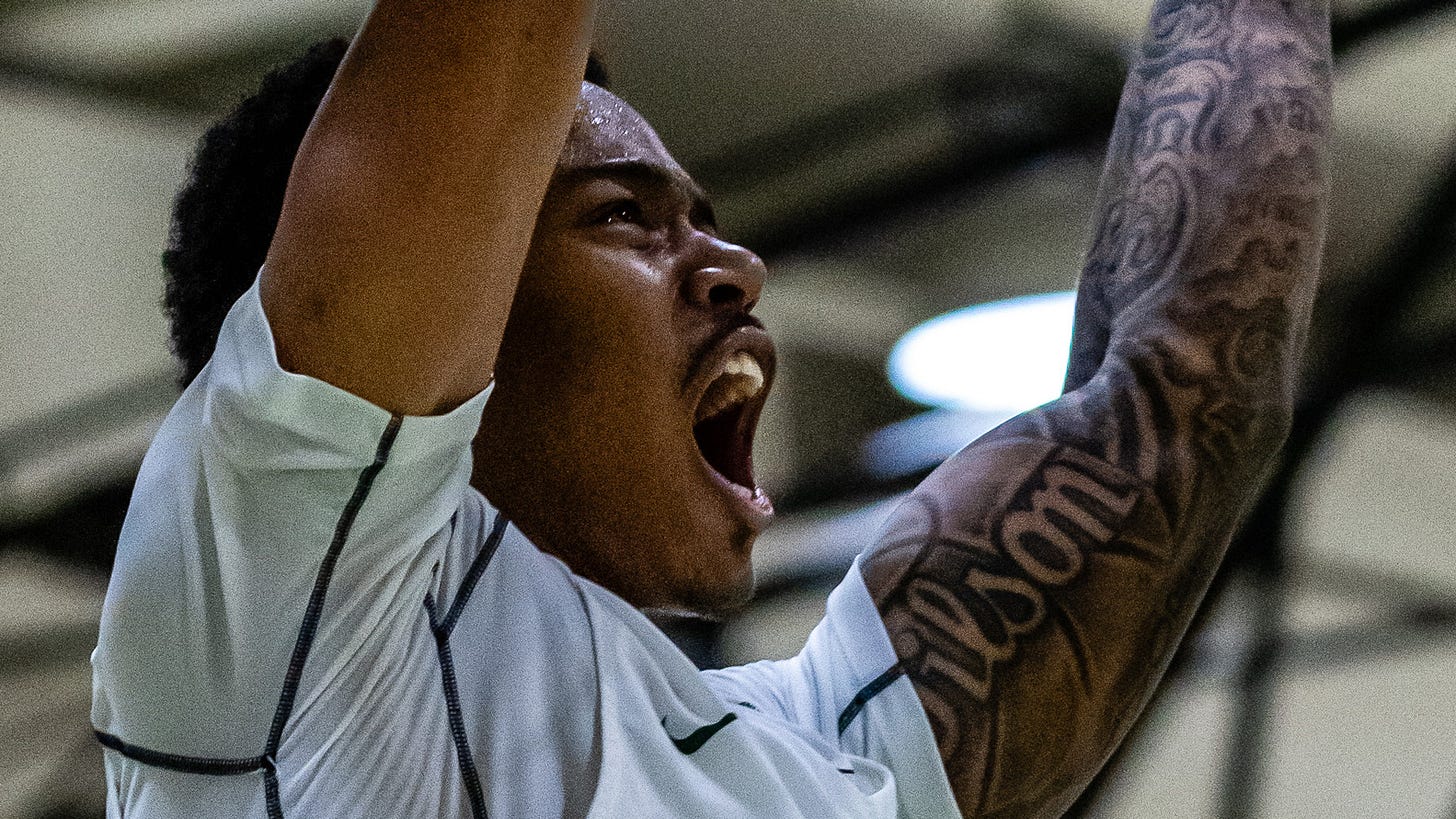Photojournalism Ethics & AI Noise Reduction
Where's the ethical line in an ever-moving world of technology?
Please Reduce Noise
A few years ago I photographed singer-songwriter Colbie Caillat’s new band Gone West at The Troubadour in West Hollywood, CA for the Santa Monica College Corsair. The editors commented on my photos, “Nice work! Please do noise reduction and resubmit.”
AI Noise Reduction
This weekend I photographed basketball for the East LA College Campus News. In processing my photos I faced, for the first time, Adobe Lightroom’s April 2023 feature “AI Noise Reduction”. I clicked the button and waited a few seconds to see the results. They were uncomfortably good.
The first time through I took Lightroom’s default AI Noise Reduction setting of 50%. The result was amazing. It looked perfect. But too perfect. The image felt a little unreal. It also had a degree of “AIesque” or Uncanny Valley sense to it.
Instead of finishing my photo editing and getting the images sent to the paper, I spent the next couple hours searching for Photojournalism Ethics and AI Noise Reduction. I didn’t find a lot.
The Ethics of Noise Reduction?
While I didn’t find much on the Ethics of AI Noise Reduction, I did find a refresher on Photojournalism Ethics. Nobody seems to have a problem with dodging & burning or color balancing. Everyone agrees that any sort of compositing is way over the line. I found arguments that “correcting flaws introduced by the camera itself” was allowable. Or even required. Which, some argued, included Noise Reduction. But also statements that “dramatically changing the image,” including changes like adding excessive saturation, was inappropriate. And this Lightroom AI Noise Reduction was dramatic.
I think the shock of Lightroom’s AI Noise Reduction at 50% was that there was now no noise at all. In the past, my manual digital noise reduction was more like “exposing Tri-X at ASA 1600 and developing it in Acufine instead of D-76”. Less grain. But not no grain.
Samples of AI & Traditional Noise Reduction
After a couple hours of searching for Ethical Noise Reduction Guidelines I went back and finished my photo editing. I tried the image again with a setting of AI Noise Reduction 25% and it was less “perfect”, more “realistic” and felt more acceptable. Here are some samples of the image with both AI & Traditional Digital Noise Reduction.

Conclusion: No AI?
As you can see in the samples above, both AI Noise Reduction and Traditional Noise Reduction can be cranked up or down to produce light or heavy noise reduction.
The light AI feels reasonable to me. Still, the traditional noise reduction is completely adequate. We’re already fearful of “AI Photography lies.” This will likely grow in the future. Given the high bar of photojournalistic ethics, it might make sense to simply avoid “AI” anything in processing images. Especially since traditional noise reduction is sufficient. Having a light hand on the amount of noise reduction is probably also appropriate.
Your Turn
I’d love to hear your thoughts on Photojournalism Ethics and Noise Reduction. Please leave a comment below! Or message me directly if you prefer.
References - Photojournalism Ethics & AI Noise Reduction
Adobe - Denoise Demystified
Reddit - Adobe AI Noise Reduction
Fred Miranda Forums - Photojournalism & Noise Reduction (2007)
NPAA - Code of Ethics
Pavilion - Ethical Photo Alterations
Associated Press - Visual Ethics
Coalition for Content Provenance and Authenticity (C2PA) - Overview
Content Authenticity Initiative - Home
Sean Tucker vlog - Photography & The Rise of A.I.








